Blog
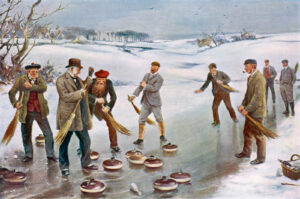
We are getting closer to understanding the physics of curling
Last year, 2024, marked the 100th anniversary of the first scientific article that I’m aware of that investigated the physics behind the sport of curling; a 1924 paper [5] by E. L. Harrington and his colleagues in the College of Engineering of the University of Saskatchewan in Saskatoon. In the 100 years since Harrington’s work, scientists and engineers have investigated various aspects of the sport, but our understanding of one of the sport’s singular fundamentals – why does a curling stone “curl” – remains incomplete, if not vague. There have been dozens of articles, authored by scientists and engineers from Canada, Sweden, Finland, China, Japan, and Korea, that have investigated the question of why stones curl the way they do, frequently contradicting each other’s mathematical models and none of them fully explaining all of a stone’s observed behaviours. At the same time, there are other aspects of the sport, particularly surrounding brushing, that have not been studied extensively and remain
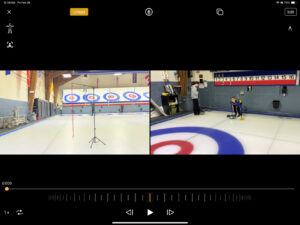
Delivery analysis using OnForm Multi-cam support
A recent feature of the OnForm video analysis platform is its support for multi-camera input. The individual devices have to be connected to the same WIFI network, but once paired a “master” device can control the recording of all of the auxiliary devices that are providing alternative camera views. In this brief article, I wish to document my equipment setup for delivery analysis. At this practice, I’m looking at two things: slide leg position, and arm extension during the release motion, that are difficult to analyze when standing either directly in front of, or behind, the athlete. Delivery Analysis Setup For delivery analysis, I use a Ryobi steel mitre sawhorse with collapsible legs, with an iPhone mount, in landscape mode, mounted in its centre. A green light laser, positioned on the far tee line, points to the hack, forming the line of delivery (LOD). The plumb line – actually just a red hockey skate shoelace with a carabiner as a
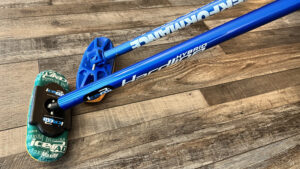
Curling brushes – Try before you buy – Part Quatre
This article is joint work with Dr. John Newhook of Dalhousie University. This past weekend featured Provincial men’s and women’s championships in most of the Canadian provinces, and what was interesting to me was the number of teams who switched to Balance Plus brush heads for their respective territorial championships. As one example, Saskatchewan hosted the combined men’s and women’s provincial championships in Kindersley. All four of the teams in the men’s and women’s CURLSASK finals are regularly Hardline users (if not sponsored by the company). However, during Provincials two of the teams – Steve Laycock on the men’s side, and Nancy Martin on the women’s side – switched to using Balance Plus RS or RS XL brush heads with prismatic Hardline Hybrid handles. This situation was the reverse of a number of instances last season that saw teams (Kaitlyn Lawes in particular) use Balance Plus LiteSpeed handles with an IcePad brush head. While we are some ways away from
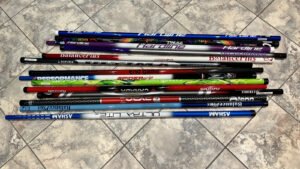
Curling brushes – Try before you buy – Part Trois
This article is joint work with Dr. John Newhook of Dalhousie University. In earlier articles, we documented the mass of commercial brush heads and in addition documented that today’s commercial brush heads distribute pressure across the brush pad in very different ways. In parts 1 and 2 of this article on “Try before you buy”, we argued that brush handle characteristics do matter and, in the second part, presented measurements of various commercial handles with respect to handle diameter. In this, the third part of “Try before you buy”, we present measurements of another important characteristic of brush handles: flex, or more properly their bending moment, or flexural rigidity. As curling equipment manufacturers continue to offer lighter-weight products, athletes may discover that there are significant differences amongst the various commercial offerings of handles in roughly two dimensions: weight and flex, in much the same way that today’s hockey sticks come in a variety of “flex” degrees as do tennis or
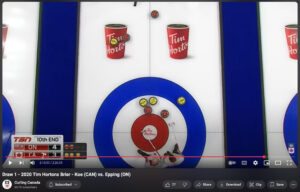
Book review: What’s your Call?
This delightful book, published in October 2022, is a collaboration between Scotland’s Doug Wilson and long-time Alberta skip (and Curling Alberta board member) Mickey Pendergast. In addition to the book, Doug runs the Daily Curling Puzzle group on Facebook, which boasts 23.5k members and offers frequent strategy puzzles for education and comment. What’s Your Call is a unique book in that it couples a particular on-ice scenario from an actual competitive game with a video clip that shows the setup and then the actual shot attempted by that particular team in that game. For the most part, game scenarios are taken from Canadian Season of Champions games so as to avoid geo-blocking from World Curling events. The book contains 50 such real-life scenarios. Unlike many older volumes on strategy, the scenarios are taken from a variety of fairly recent matches and so the 5-rock FGZ rule is in effect (but alas, not the more recent “No-Tick” rule change adopted this
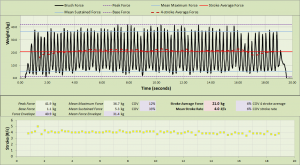
Should I brush faster? Stroke rate, displacement, and vertical force
This article is joint work with Dr. John Newhook, professor and Dean of Engineering at Dalhousie University in Halifax. Over the past year we have been asked numerous times by athletes and coaches alike if they should brush faster – that is, with a higher stroke rate – than what they are doing currently, with the underlying assumption that brushing more quickly will lead to improved brushing performance. A possible reason for these questions is the success of several of the women’s teams from Asia over the past few seasons, who from observation do brush a bit more quickly than their typical Canadian competitors. However, as with many things brushing any answer is dependent on a number of variables and trade-offs, and in no small way is also dependent on the force profile(s) of the particular players. In this article, we’ll take a look at the science in the available literature, coupled with our own experiences, and try to supply